Have you ever heard of the axolotl? This friendly animal is fascinating, and it stays in a young form its whole life, like Peter Pan. Axolotls are amphibians that never grow beyond their tadpole shapes. Furthermore, axolotls can regenerate almost all parts of their bodies, not just their limbs. It makes them a popular subject for medical research.
Where do axolotls live?
There are 33 species of axolotls, which are distributed in North America from southwest Alaska and southern Canada to the highlands of Mexico. In Mexico, there are 17 species in the northeast and center of the country, 16 of which are endemic. Sadly, most wild Mexican axolotls are critically endangered.
Their habitats are shallow-water lakes or canals with lots of aquatic vegetation. They are sometimes confused with salamanders. In fact, the two have a lot in common. The main difference is that salamanders are born in water as tadpoles but then undergo a metamorphosis and leave the water to inhabit land. Axolotls, however, are completely aquatic.
This environment is where they feed on worms, larvae, insect eggs, mollusks, crustaceans and some small fish. Axolotls catch food by opening their mouths quickly, sucking their food in like a vacuum, and then using their small teeth to retain the food in their mouths.

Axolotls have a unique anatomy
The axolotl is a peculiar amphibian. When the egg hatches underwater, the axolotl maintains its tadpole-like dorsal fin for life. A female lays between 300 and 1,000 eggs per clutch. The eggs are transparent and take between 10 and 14 days to hatch.
Axolotls are born without limbs but later develop four legs. First, they grow the two front legs. A week later, they develop the two back ones. They have four toes on their front paws and five on their back paws.
Another curious fact is axolotls don’t have eyelids, which makes them sensitive to light. Therefore, they must remain in dark environments. Not surprisingly, axolotls are nocturnal animals.
The average size of an axolotl is 6 inches (15 cm) in length, although there are some that measure up to 12 inches (30 cm). In addition, females are wider than males and have a shorter fin/tail.
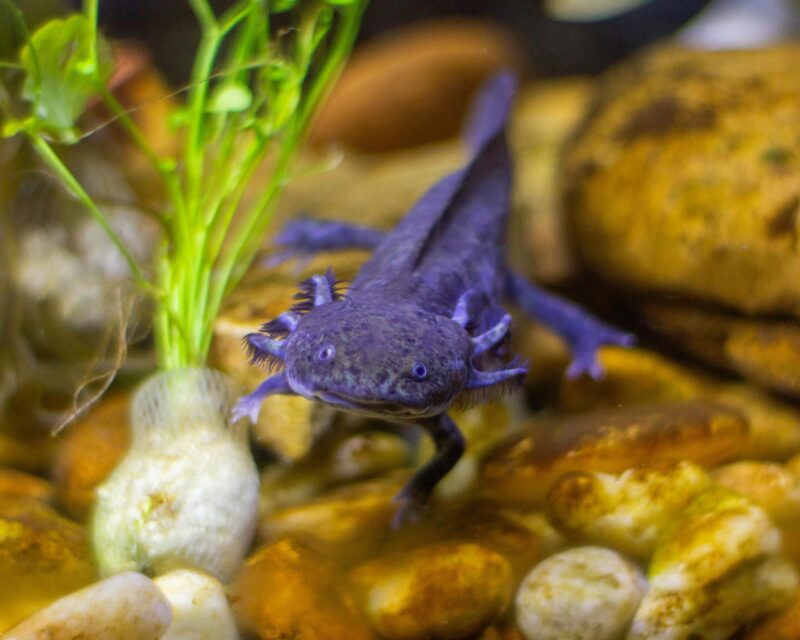
Various ways to breathe
Axolotls have three different ways to breathe: through gills, lungs and their skin.
Those “feathers” on both sides of the head are their external gills. This is the primary means by which they breathe. When water enters through the mouth, it escapes through the gills. Through this process, the axolotl brings oxygen to its blood.
What we call breathing is – in the axolotl – technically known as gas exchange, something that is also done through the skin and lungs.
The quality of the water they live in is extremely important. The life expectancy of axolotls in captivity ranges from 10 to 15 years, while in the wild they only live three to six years.

An axolotl’s regeneration superpower
Axolotls have the incredible ability to regenerate from their tails/fins to important organs such as the heart, brain, lungs or kidneys. In fact, if they lose any of their limbs, they grow back.
When they regenerate an organ, it doesn’t even leave a scar! The organs look fresh and new. For this reason, axolotls are part of large scientific studies worldwide.
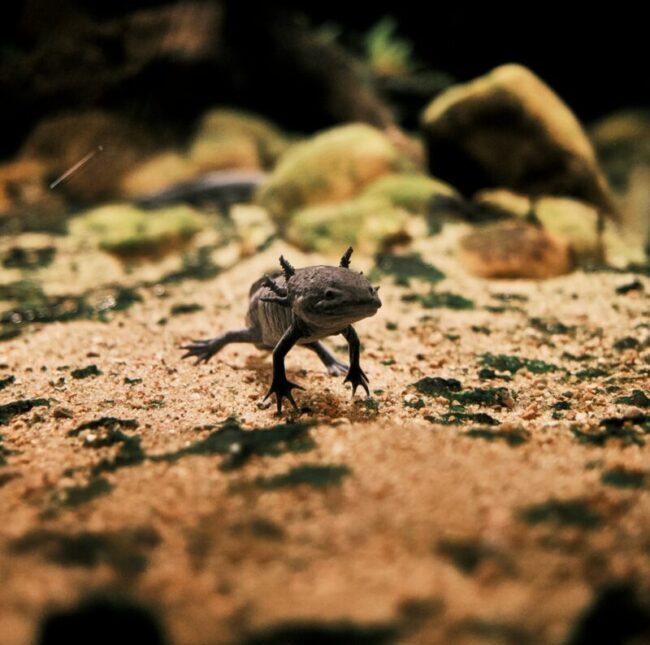
The axolotl is a colorful animal
Axolotls can have a great variety of colors, although they mainly have four shades. The pink axolotl is the most famous. This one has a happy and tender face, and funny little round black eyes.
The gold one is similar but with a slight golden tone.
The albino axolotl is rather whitish, and its eyes are red. Albinism – or lack of skin color – is caused by a recessive gene transmitted to offspring when both parents carry the gene.
And last but not least are those that camouflage themselves best among aquatic plants, the green-brown or black axolotls.
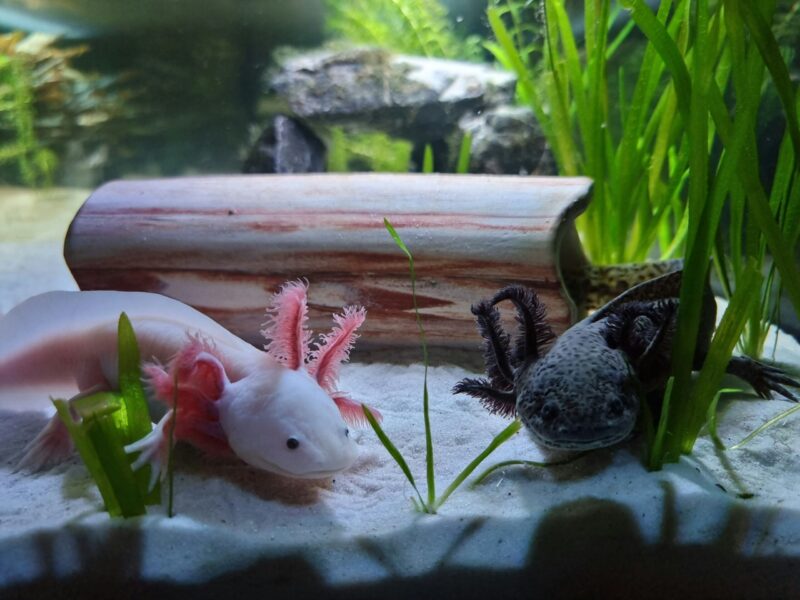
The axolotl is in critical danger of extinction
Unfortunately, wild axolotls are critically endangered due to several factors. One is the contamination of the waters where they live, largely due to chemical pollution, plastic waste and other garbage dumped in the water.
Luis Zambrano, professor of zoology at the National Autonomous University of Mexico, wrote:
All our aquatic animals suffer from poor water quality, but amphibians more so because they have to breathe with their skin.
Another important factor is axolotls are captured illegally and exploited for their medicinal uses (without a scientific basis), as food for humans and also sold as pets.
Another factor causing the decline of the axolotl population is the introduction of invasive species for human consumption. These species feed on axolotls, becoming their predators.
Currently, different environmental regulations protect axolotls. Plus, there are various research and conservation centers that work hard to change their situation.
However, the reintroduction into their natural habitat is not occurring yet because the threats are still high. According to experts, the natural environment must first be properly conditioned.
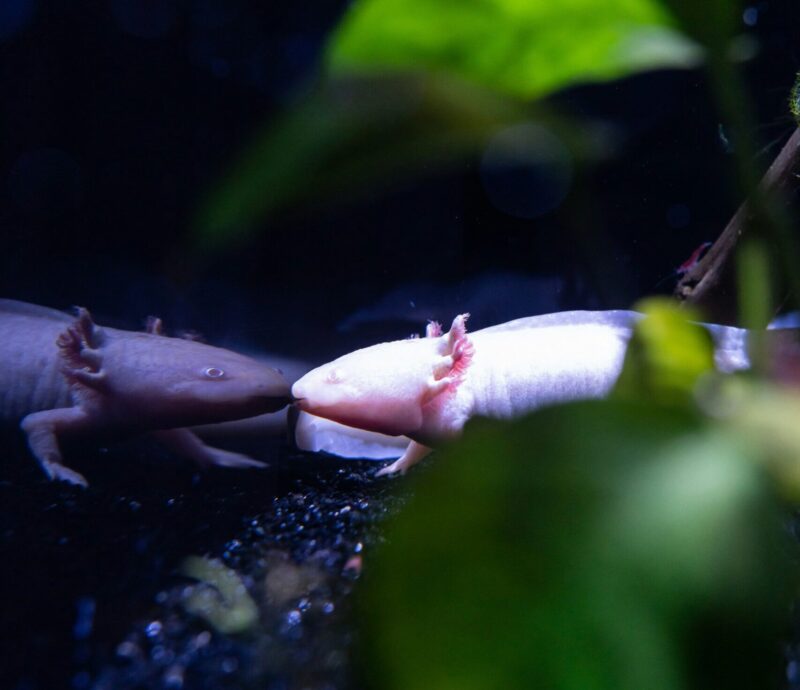
Axolotls in mythology
Axolotls have inhabited Mexico’s great lakes area since pre-Hispanic times, when the Aztecs lived. They are part of the culture and mythology of the Mexican people. In fact, their name comes from Nahuatl. Atl means water and xolotl means monster. Put together, it means water monster.
These small animals are protagonists of Mexican mythology, since the axolotl is related to the Aztec god Xolotl, who disguised himself as this animal to avoid being sacrificed.
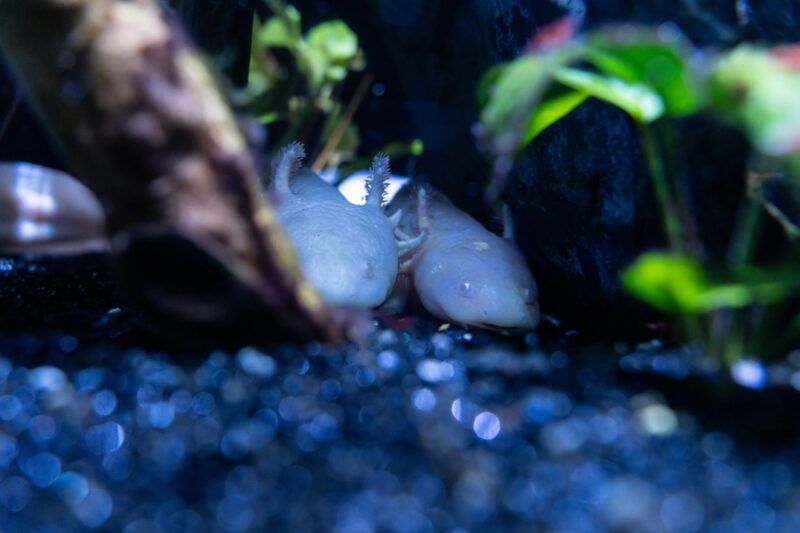
Bottom line: This spectacular amphibian keeps its body forever young. It never loses its tadpole tail and can regenerate not only its limbs or fin/tail, but also its organs!











